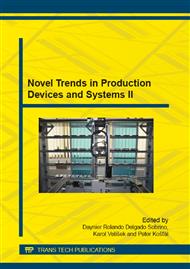[1]
A. D. Neto, R. Subramanyan, M. Vieira, G. H. Travassos, and F. Shull, Improving Evidence about Software Technologies: A Look at Model-Based Testing, in IEEE Software, vol. 25, no. 3, pp.10-13, (2008).
DOI: 10.1109/ms.2008.64
Google Scholar
[2]
H. Raffelt, M. Merten, B. Steffen, and T. Margaria, Dynamic testing via automata learning, International Journal on Software Tools for Technology Transfer, vol. 11, no. 4, pp.307-324, (2009).
DOI: 10.1007/s10009-009-0120-7
Google Scholar
[3]
F. Aarts, J. Schmaltz, and F. Vaandrager, Inference and Abstraction of the Biometric Passport, in Leveraging Applications of Formal Methods, Verification, and Validation, Springer Berlin Heidelberg, vol. 6415, pp.673-686, (2010).
DOI: 10.1007/978-3-642-16558-0_54
Google Scholar
[4]
T. Weise, Global Optimization Algorithms - Theory and Application, 2009, [Online] [Accessed: 2014-04-25]. Available: http: /www. it-weise. de/projects/book. pdf.
Google Scholar
[5]
J. Alander, T. Mantere, and P. Turunen, Genetic Algorithm Based Software Testing, in Artificial Neural Nets and Genetic Algorithms, Springer Vienna, pp.325-328, (1998).
DOI: 10.1007/978-3-7091-6492-1_71
Google Scholar
[6]
J. Wegener, H. Sthamer, B. F. Jones, and D. E. Eyres, Testing real-time systems using genetic algorithms, in Software Quality Journal, vol. 6, no. 2, pp.127-135, (1997).
DOI: 10.1023/a:1018551716639
Google Scholar
[7]
H. Sthamer, A. Baresel, and J. Wegener, Evolutionary Testing of Embedded Systems, in Evolutionary Algorithms for Embedded System Design, Springer US, vol. 10, pp.1-33, (2001).
DOI: 10.1007/978-1-4615-1035-2_1
Google Scholar
[8]
J. Wegener, H. Sthamer, and A. Baresel, Application fields for evolutionary testing, in Proceedings of the 9th European International Conference on Software Testing Analysis & Review (Eurostar 2001), Stockholm, (2001).
Google Scholar
[9]
M. Alshraideh, B. A. Mahafzah, and S. Al-sharaeh, A multiple-population genetic algorithm for branch coverage test data generation, Software Quality Journal, vol. 19, no. 3, pp.489-513, 09 (2011).
DOI: 10.1007/s11219-010-9117-4
Google Scholar
[10]
I. Alsmadi, Using genetic algorithms for test case generation and selection optimization, in Canadian Conference on Electrical and Computer Engineering (CCECE), pp.1-4, (2010).
DOI: 10.1109/ccece.2010.5575262
Google Scholar
[11]
P. Tonella, Evolutionary testing of classes, SIGSOFT Softw. Eng. Notes, vol. 29, no. 4, pp.119-128, (2004).
DOI: 10.1145/1013886.1007528
Google Scholar
[12]
O. Bühler and J. Wegener, Evolutionary functional testing, in Computers & Operations Research, vol. 35, no. 10, p.3144, (2008).
DOI: 10.1016/j.cor.2007.01.015
Google Scholar
[13]
L. Kof, From Requirements Documents to System Models: A Tool for Interactive Semi-Automatic Translation, in Requirements Engineering Conference (RE), pp.391-392, (2010).
DOI: 10.1109/re.2010.53
Google Scholar
[14]
V. A. D. Santiago Júnior and N. L. Vijaykumar, Generating model-based test cases from natural language requirements for space application software, in Software Quality Control, vol. 20, no. 1, pp.77-143, (2012).
DOI: 10.1007/s11219-011-9155-6
Google Scholar
[15]
D. Angluin, Learning regular sets from queries and counterexamples, in Inf. Comput., vol. 75, no. 2, pp.87-106, Nov. (1987).
DOI: 10.1016/0890-5401(87)90052-6
Google Scholar
[16]
Radbound University Nijmegen, Integrating Testing And Learning of Interface Automata (ITALIA), [Online] [Accessed: 2014-04-25]. Available: http: /www. italia. cs. ru. nl.
Google Scholar


